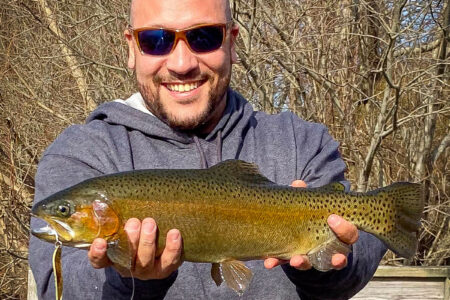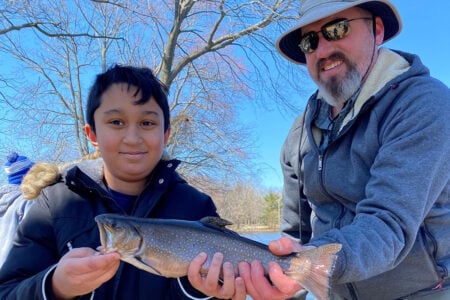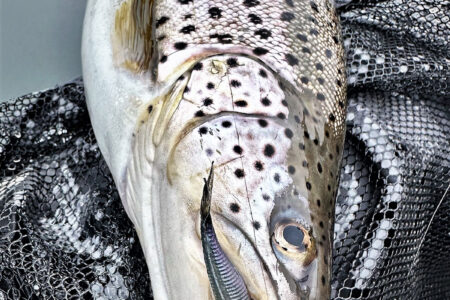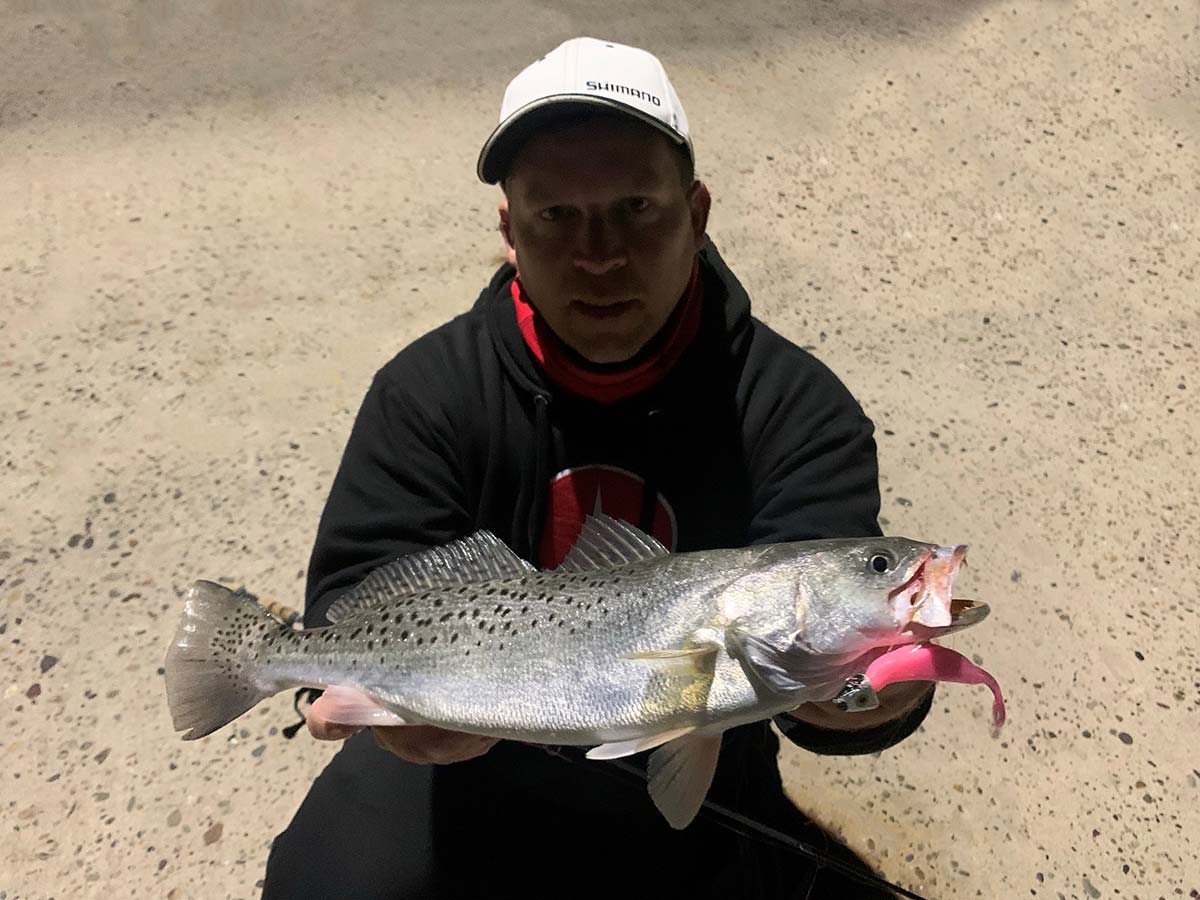
Will speckled trout – spotted seatrout – make another epic showing in Cape May County this fall?
Along the New Jersey coast, Labor Day weekend marks the unofficial end of summer and the beginning of the fall run. Jet Skis are placed onto trailers and driven into the sunset, young people are heading back to school and the crowds of tourists are replaced with cooler temperatures and massive schools of baitfish. It’s a wonderful time of year!
When I mention the fall run, many anglers may think of hungry schools of striped bass and bluefish, but I’m hoping for a different kind of fall run this year: spotted seatrout also known as speckled trout. Our beloved “specks” are a lot more unpredictable than striped bass and bluefish as they don’t always visit our area in large numbers. After an outstanding 2019 season, 2020 and 2021 were by most accounts a giant bust.
To the best of my knowledge, a total of two specks were caught in New Jersey during 2020 and only four in 2021. When I hear local anglers referring to more common species with the overused term “unicorns” I can’t help but roll my eyes; if they only knew!
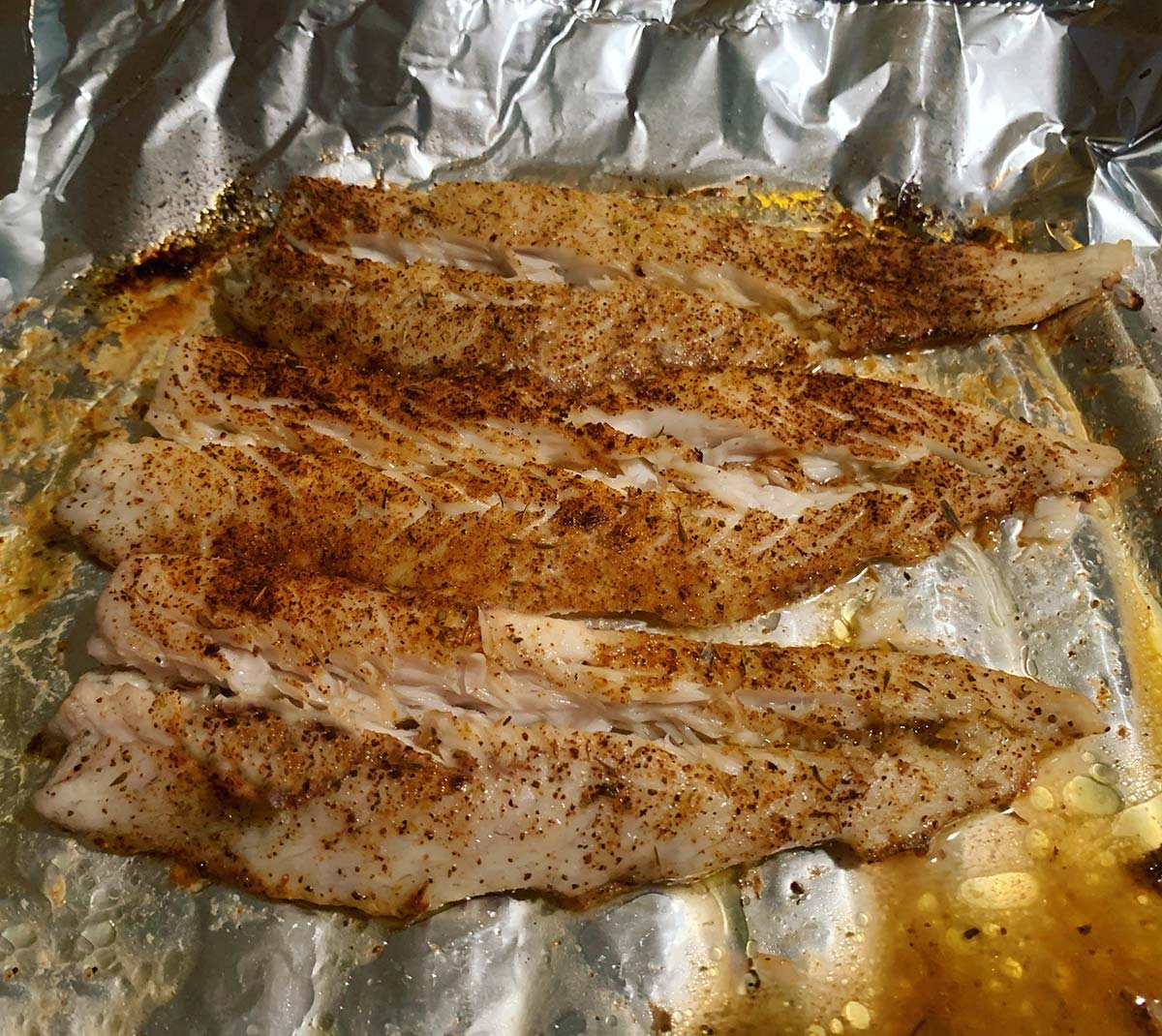
Disappearing Act
Over the last 30 years, I’d like to believe I’ve learned something about our waters and the fish that frequent them, but the specks have tested me more than any other species. During that time, I’ve noticed some of our favorite fish have made a major shift to the north. Years ago, striped bass were plentiful in the Delaware Bay and Cape May Rips. Now it seems like the best action happens up north in the Raritan Bay. When I drive down to Fortescue and see the Weakfish Capital of the World sign I don’t know whether to laugh or cry.
Season after season I watched as weakfish numbers progressed north out of the Delaware Bay, up into New Jersey’s coastal inlets and finally up into New York waters. A quick glance at the current standings of this year’s Dream Boat Challenge at The Fisherman Magazine provides a little more evidence to my observations: New York subscribers hold five of the top ten weakfish entries while New England has three and New Jersey’s subscribers hold just two.
While I’ll certainly miss those glory days and nights chasing striped bass and tiderunner weakfish, the news isn’t all bad. I’m adapting to the new normal and remain hopeful that some of the southern species will begin to fill in the voids. Sheepshead and triggerfish already seem to be filling in nicely. I’ve also noticed many more cownose rays, spinner sharks, blacktip sharks and cobia in our waters over the last five to ten years. The frequency of these southern species is promising and if the warmer weather trend continues, it should only be a matter of time before we see a consistent speckled seatrout and red drum fishery.
I wish I could personally share a bunch of new and useful techniques, but the truth is since my last article (see “SHHHHHH South Jersey Specks” in The Fisherman, October of 2020) there haven’t been enough specks around in our area to learn much. So I did the next best thing; I caught up with one of the state’s best longtime speckled trout fishermen.

Dr. Speck & His Sidekick
As mentioned, speck fishermen are among the most tightlipped group you’ll ever come across so I count our conversations as groundbreaking. For anonymity purposes, the speckled trout expert with whom I consulted asked that I refer to him as Dr. Speck; and he mentioned his sidekick Kill Bill. I agreed but I told him there is no way I’m ever calling him Dr. Speck on the water.
| WEAKS, OR SPECKS? |
| While weakfish (Cynoscion Regalis) and speckled trout (Cynoscion Nebulosis) are two different species, the New Jersey Division of Fish & Wildlife legally categorizes them as one in the same. For the past 2 years, a new regulatory package has been slogging through the bureaucratic process in Trenton to separate the two species in statutory code to allow for two different sets of regulations, but according to Jeff Brust, Bureau Chief at the New Jersey Division of Fish & Wildlife, the process is still ongoing. “It has to go through multiple internal reviews through the legal,” said Brust at the July 14 meeting of the New Jersey Marine Fisheries Council, adding “But we’re aiming to have that moving through the legal process starting in November.” So until further notice, New Jersey speckled trout regulations are the same as weakfish, one fish at 13 inches. In Delaware on the other hand, there’s a 12-inch minimum on specks, and no bag limit. |
When it comes to specks, it seems like conditions for their arrival into our waterways are much more important than the conditions to catch them once they are present. I’m sure you’ve heard the old adage, “You can’t catch what’s not there.” God knows I’ve tried! According to Dr. Speck, a successful speck season consists of a late August or early September tropical system just off our coast, followed by a prevailing northwest wind. A steady dose of northwest wind brings dropping water temperatures, keeps mullet near the beach and provides clean water in our back bays, inlets and surf. If we see a steady dose of northeast or south wind, you’re probably better off trying to fish for something else.
Years ago, experienced anglers would catch specks in September, but more recently our weather patterns have changed and the seatrout arrive a little later, more towards the middle/end of October and hang around well into November/December. It may be hard to believe, but there are a few documented spotted seatrout catches as late as January in our waters.
Next I asked about preferred water temperatures. Dr. Speck stated that he usually starts poking around when the water gets down to 68 degrees, however 58 degrees is when the bite really gets going. New Jersey specks remain active until the water gets down to about 50 degrees, but there have been a few catches in the area with temps as low as 47 degrees.
Sea Trout Arsenal
Dr. Speck’s lure lineup consists only of the colors pink, chartreuse and white. Lightweight jigs with paddle tails, curly tails or forked tailed soft plastic baits work well. Zoom Bait’s Super Fluke and Culprit’s Riptide Mullet are time-tested producers. MirrOLures are another favorite with the Catch 2000 Jr. favored, especially if there’s still mullet around in the surf.
Specks are accessible to everyone as they can be caught by land-based anglers fishing from sod banks, piers and bridges as well as by boaters and kayakers. Dr. Speck often fishes from his boat, but when the wind is blowing he can be found casting from some of his favorite sod banks. There are no specific areas where specks will show up each year, but they can usually be found in close proximity to the inlets in Atlantic and Cape May counties wherever mullet, peanut bunker and silversides stage. I’ve had good luck fishing along the flats and pockets towards the back sides of our local inlets where the silversides are so thick they jump out of the water when you’re retrieving your lure.
The average size of speckled trout you’ll find in New Jersey is often between 16 and 21 inches. I find it odd that we rarely hear of juvenile specks (spikes) in our waters. When I asked Dr. Speck his thoughts on the matter, he said in all the years he’s spent on the water, he’s only caught spikes during one year. With this information and the lack of anything other than a stray spring catch, I do not believe that speckled trout reproduce in our waterways. Maybe one day, but not yet.
Fortunately, we do see some specks on the other end of the spectrum. Trophy-sized specks are no strangers to New Jersey waters. Dr. Speck has a few 8-plus-pound specks to his credit with his personal best coming in at 8.5 pounds. He’s heard of local fish as big as 10.75 pounds! New Jersey’s official state record for spotted seatrout was caught by Bert Harper in 1974 and pushed the scales down to 11 pounds, 2 ounces.
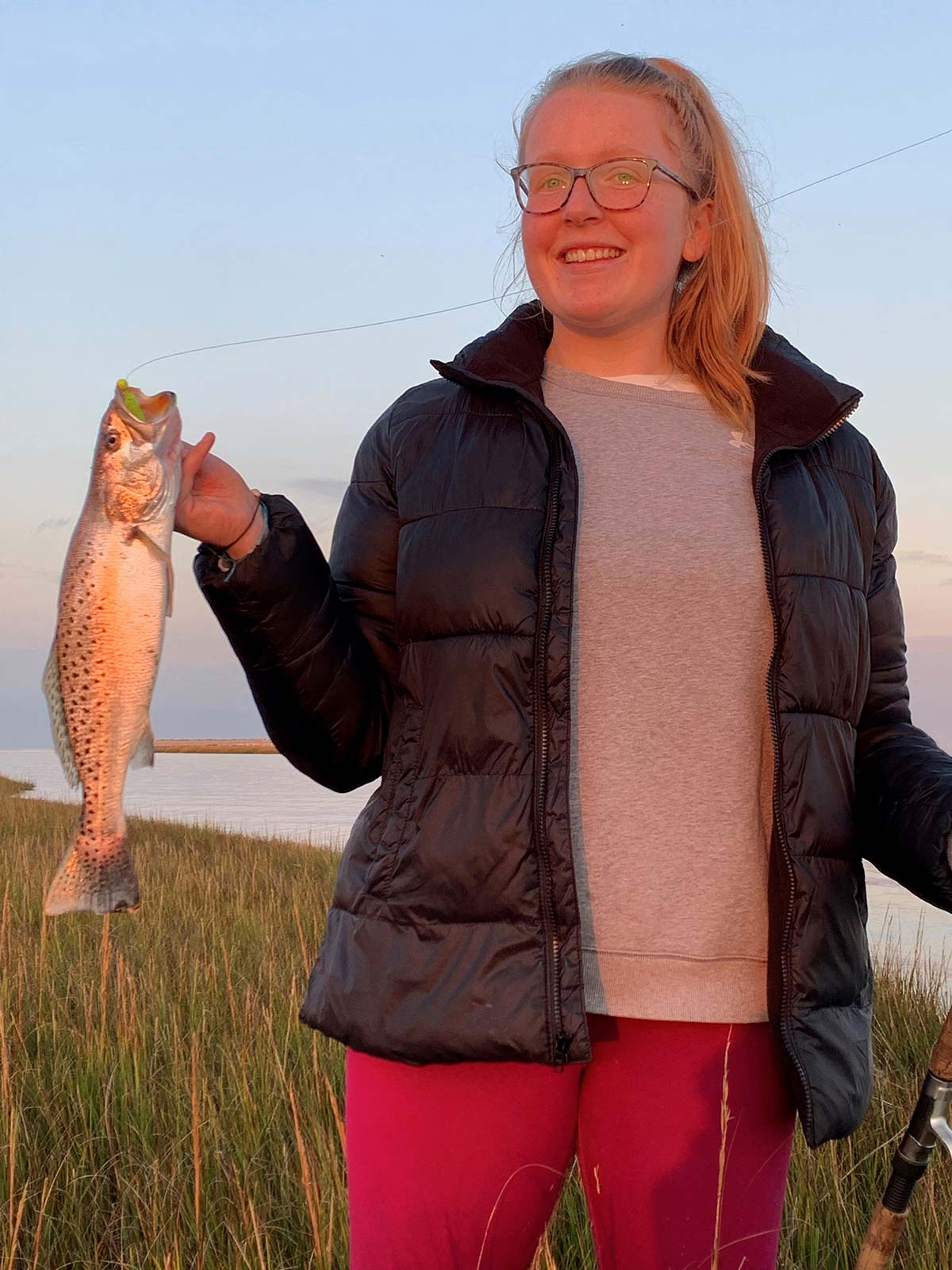
A Southern Visitor
With our long term warming trend, why aren’t we seeing more large trout? Most of the big seatrout I referenced above came from a long time ago. Many of Dr. Speck’s best seatrout came from back in the late 1990s. Spotted seatrout are a warm water, southern species; if our waters are warming, wouldn’t it make sense to see more fish now than before our waters warmed up? It’s these types of unanswered questions that keep even what many would consider “expert anglers” humble. No matter how much time one spends on the water, there is always more to learn, especially when it comes to sporadic species such as seatrout.
While on the subject of yesteryear, rumor has it that Corson’s Inlet was once considered the red drum capital of the world. Redfish numbers are good to the south of us and with our recent warming climate, why aren’t we seeing a return of the red drum? We’ve had a few promising years with solid redfish catches but much like the speck bite, a few good runs are followed by a bunch of off years and my hopes for a predictable seasonal fishery fade away. I asked Dr. Speck if he noticed any correlation between the arrivals of New Jersey specks and red drum but he couldn’t connect the dots.
When I asked Dr. Speck what makes someone a good speck angler he responded with only one word, “Dedication.” I think the same is true with many things in life. You don’t catch 978 specks by accident. Let’s be honest, many of the local anglers would be happy to have one Jersey speck under their belt. One more good season will put him over 1000 Jersey specks. Let’s hope it happens this year!
